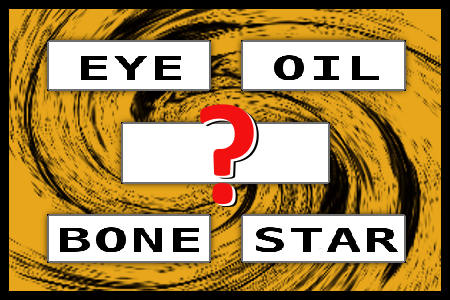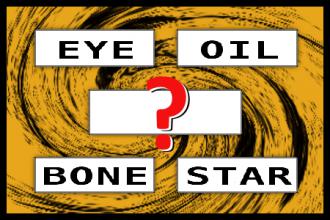Word Association: EYE, OIL, BONE, STAR
Word Association: EYE, OIL, BONE, STARCorrect answers: 38
The first user who solved this task is Sanja Šabović.
#brainteasers #wordpuzzles #wordassociations

Tourists
A group of American tourists was being guided through an ancient castle in Europe.
"This place," the guide told them, "is 600 years old. Not a stone in it has been touched, nothing altered, nothing replaced in all those years."
"Wow," said one woman dryly, "they must have the same landlord I have."

